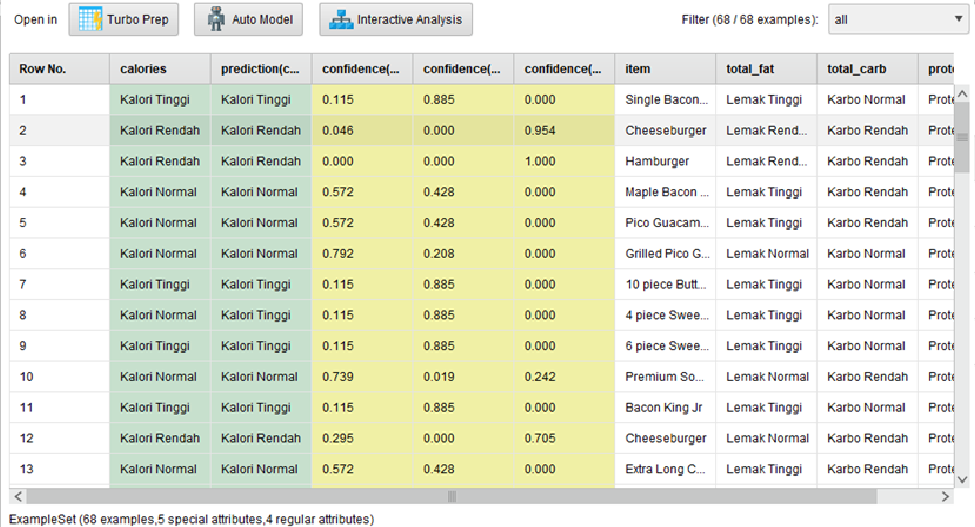KLASIFIKASI TINGKATAN KALORI MENU RESTORAN FAST FOOD DI INDONESIA MENGGUNAKAN METODE NAIVE BAYES
DOI:
https://doi.org/10.21067/bimasakti.v6i2.10057Abstract
Fast food is food that is easy to package, easy to serve, practical, or processed in a simple way. The more often people consume fast food, the more threats to health will be. This is because fast food contains lots of saturated fat, trans fat, and sodium. In addition, fast food also contains a high level of calories, but not balanced with the nutritional content needed by the body. This study aims to find out: (1) calorie levels on fast food restaurant menus; (2) The learning process carried out by Naive Bayes in determining decision making; (3) The level of accuracy of calorie level suitability on fast food restaurant menus using the naïve bayes method.
This research method is divided into two stages, namely pre-processing and processing. The pre-processing stage is divided into three stages, namely data collection, data cleaning and data transformation. The data collection stage was carried out by downloading from Kaggle's official website which amounted to 515 data. Then at the cleaning stage, the data was taken the menus of fast food restaurants in Indonesia and only took 4 attributes. Then at the data transformation stage, namely giving labels to each attribute. The processing stage is done in two ways, namely manually and using the RapidMiner tool.
The results of the study showed that the average accuracy value produced was 82.35%. With the accuracy of each class attribute, namely Normal Calories by 80.65%, High Calories by 75.00%, and Low Calories by 90.48%.
The conclusions of this study are: (1) Naive Bayes algorithm can be used to classify the calorie level of fast food restaurant menus in Indonesia based on the main nutritional parameters, namely carbohydrates, fats, and proteins; (2) The use of the Naive Bayes algorithm can produce a fairly high accuracy rate of 82.35% so that it can be concluded that the classification results carried out by the algorithm have a match rate with the original data of 82.35%.





